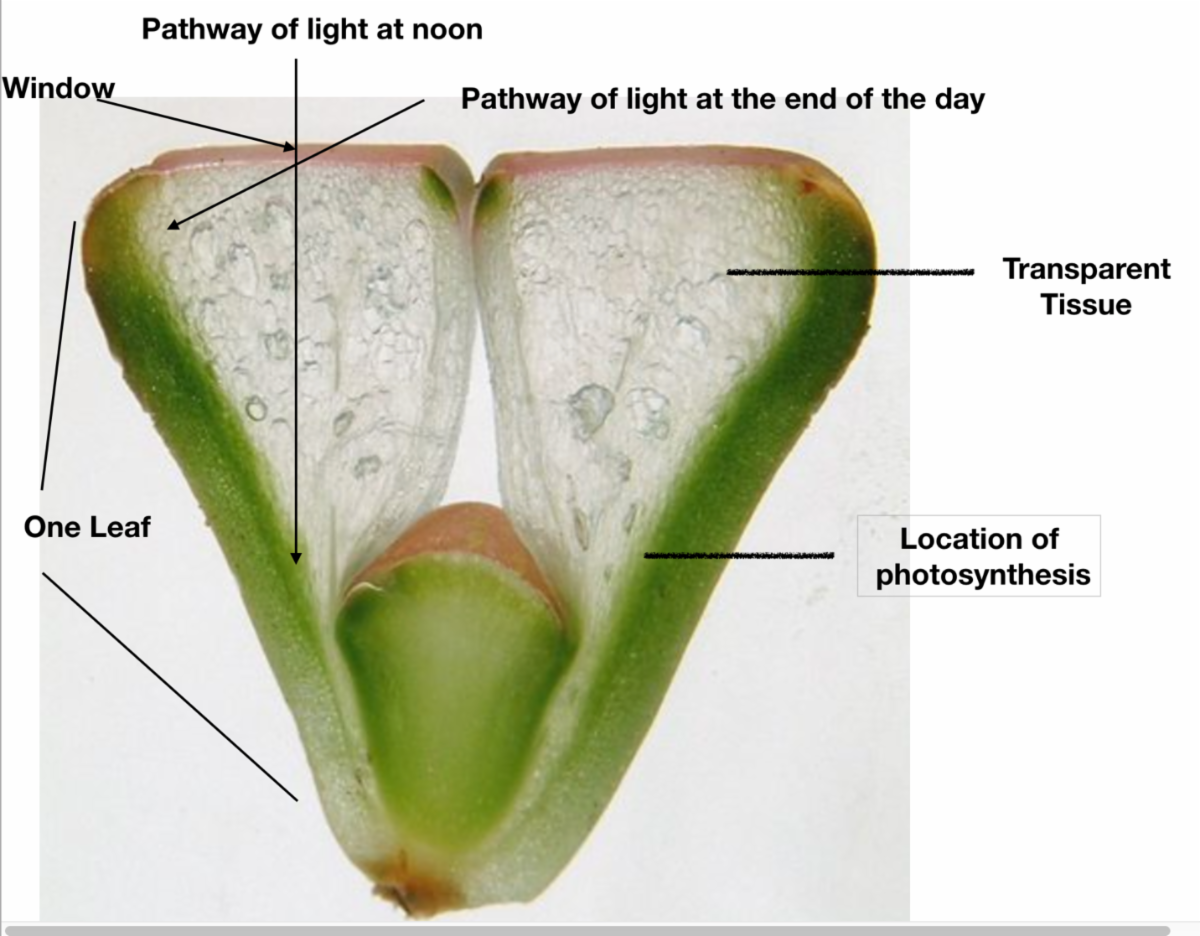

Dr. Lew Feldman, Garden Director
Undergraduate visitors to the Garden often ask me about “window” or “stone plants,” which belong to the taxonomic group known as Lithops. Students want to know, what part of the plant they are looking at, where do these plants grow and why are these plants called window or stone plant?
Lithops are quite remarkable plants. They were first described in the early 1800s during botanical expeditions to southern Africa, where they are native. Their plant body mainly consists of two enlarged leaves between which a flower occasionally emerges.
Because their coloring and patterning mimic the surrounding rocky soil, Lithops are very well camouflaged; hence the origin of the descriptor, stone plants. But what about their other name, window plants? What does this name refer to?
In order to appreciate why these plants have “windows,” we need to remind ourselves that Lithops grow in areas of very high light intensity. Often the light is so strong that it can damage the photosynthetic machinery located in cells along the inside of the leaves, as shown in the diagram below.
And this is where the windows come into the story. When the sun is directly overhead, and strongest, the light must enter a window (essentially clear area of the leaf) and travel through a long path of transparent tissue, before reaching the photosynthesizing cells. Whereas at the end of the day, when the sun is less intense, in order for the light to reach the photosynthesizing cells, it need only travel through a short pathway of transparent tissue. The longer the pathway through the transparent tissue, the more the intensity of the light is reduced before arriving at the cells conducting photosynthesis. In this way, by the varying the length of the transparent tissue pathway, the window plants can control the intensity of the light reaching the photosynthesizing cells.
 The UC Botanical Garden has a large number of Lithops as part of our very diverse Arid House Collection, which dates back to the 1920s with most plants grown from seed or cuttings taken on sanctioned expedition trips. Some of these plants, when collected, were new discoveries, and some no longer exist in their original habitats.
The UC Botanical Garden has a large number of Lithops as part of our very diverse Arid House Collection, which dates back to the 1920s with most plants grown from seed or cuttings taken on sanctioned expedition trips. Some of these plants, when collected, were new discoveries, and some no longer exist in their original habitats.
The Arid House Collection is comprised of approximately 2,000-2,500 taxa, of which about 350 are endangered. The collection, therefore, represents a prominent resource for plant scientists and conservation biologists and will become more important as the climate changes and rainfall patterns alter, leading to more widespread, arid habitats. Given its increased importance, the Garden has made significant efforts to curate and expand the Arid House Collection.
